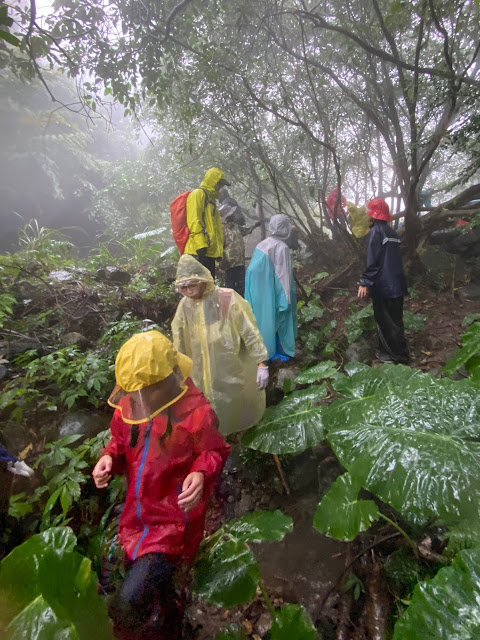It's almost middle of December and I still haven't posted what we've been up to during the previous month.
Weather in November was totally unpredictable, one day cold and rainy and next very warm and sunny. Unfortunately the big scouting hiking trip happened to take place on the very wet and cold day. Ania had to go through fast running streams and slippery mud. She had water in her wellies, but didn't complain even for a second!
Fortunately another scouting outing in November was in a better weather and in the city.
Beside the scouting outings in November, we took a day-long family trip to a small town in Yunlin 雲林. We visited a towel factory there and admired the amazing murals for which the town is known.
(All scouting photos are from other parents.)
Grandma Bear Towels and Xinglong Towel Factory
Kitty School and Cats on the Roof
Huwei Papermaking Village
In Huwei it was peanut season. The peanuts were being brought placed in front of the houses on on the streets to dry.
We also went to see the old railway steel bridge by which sugar was brought to the factory.
And that was our trip to Yunlin.
One Saturday Jaś had a gig in Yingge Ceramics Museum. Thanks to that Ania and I could visit the museum and see some of the amazing artwork displayed at the Ceramics Biennale exhibit.
One morning we went for a few hours down the mountain to Xindian to look for geocaches. Before we started looking for them Ania checked out the new playground.
We managed to find three out of four caches. And got help in figuring out how to find a whole series of caches that are part of the cache art.
Another outing was to the theater. We went to see a play - musical - for children "My Little Boys". It was a lot of fun, Ania enjoyed it a lot.
One of Ania's favourite books is "The Children of Noisy Village" by Astrid Lindgren. In November she made a project about it. You can see more photos of the project and read about it (in Polish)
HERE.
Ania also worked on another project - about farm animals and pets. She found out what are the names of the animals in three languages. This project was supposed to be part of the work for receiving a scouting badge.
Ania read quite a few books during the last month. Here they are:
Of course beside all these fun outings, projects and reading there were also some real 😉 lessons. Ania also learned math, English, Polish, Chinese, Japanese, geography, biology and history.





































Na ten blog na pewno będę wracał bo ten blog jest bardzo dobrze prowadzony.
ReplyDelete